20 Things You Must Know Before You Start Practicing Yoga
Tips to guide you through the preparation phase and help you to start yoga the right way
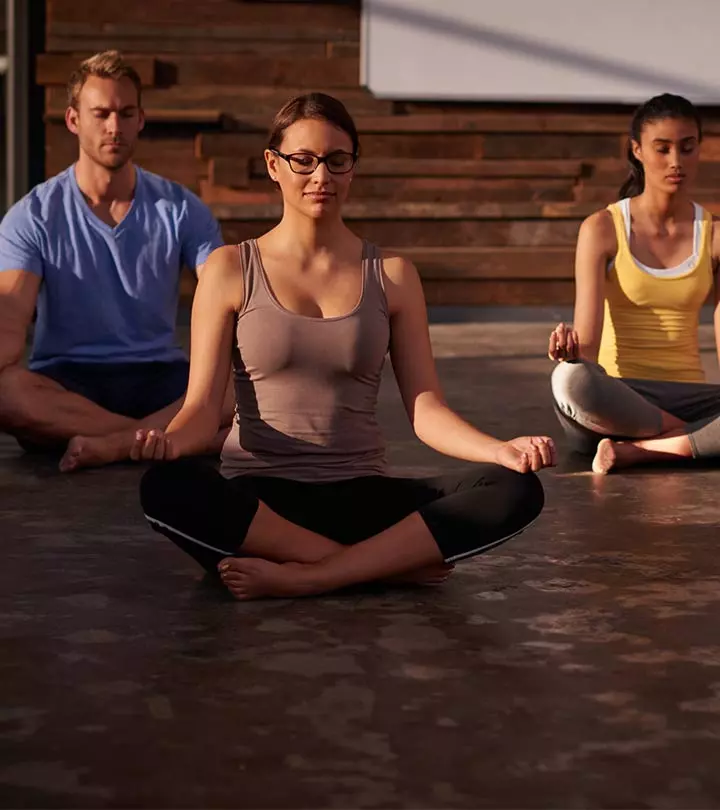
Image: Istock
Yoga is an enthralling activity. Its awareness is spreading like wildfire all over the world. But do you know the things to do before yoga? If not, this post is the perfect guide for you. Everyone appears to be quite interested in learning how a stretching exercise can be a solution to so many issues. We have included some fundamental information about yoga in this article that you should be aware of before joining a yoga club.
Yoga is, at its core, about gaining that much-needed knowledge of your body in both time and space. When you first start your practice, it may seem hard to adopt an inversion or to focus on a specific movement in your body. However, keep in mind that you are learning something new. It is not as difficult as it appears if you give it enough time. You will know exactly what to expect in your very first class with the help of this guide. Keep reading!
In This Article
A Peep Into The World Of Yoga
A. Embracing The Yoga Basics
B. All About The Practice
C. Beware And Be Aware
D. Yoga Terminology
E. The Fruits Of Yoga
A. Embracing The Yoga Basics
These pointers will prepare you with the basics that you need to join a yoga class.
Knowing the few basic rules will give you a little confidence before you enter that class.
1. The Right Clothes And Accessories
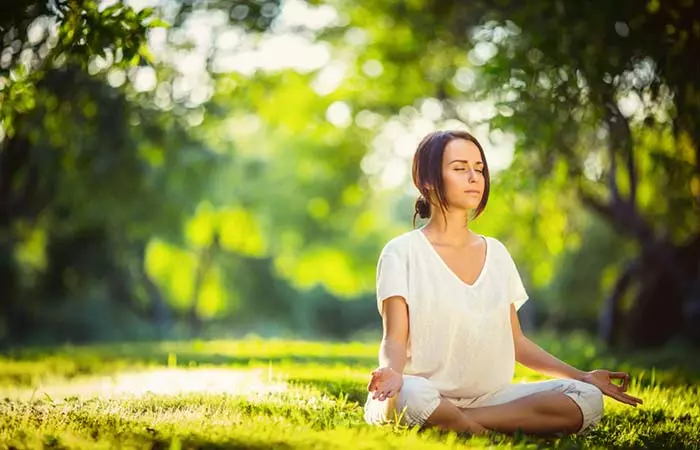
Make sure you wear the proper attire – yoga does not need anything fancy. All you need is loose, comfortable clothing that will allow you to move your body easily. The stretching involves a full range of motion of your limbs. Hence, your clothes should be loose enough to allow for movement, and tight enough to avoid embarrassing situations.
You may also want to invest in a good yoga mat. If you’re unsure if you’ll love yoga, consider purchasing a less expensive mat until you are committed. Once you fall in love with yoga, you could invest in the right mat, depending on the form of yoga you chose. Some yoga studio offer yoga mats for free or a minimal fee.
2. Eat On Time

It is essential that your stomach and bowels are empty before you commence your practice. You must leave a gap of two to four hours between your last meal and your workout. Avoiding heavy meals is necessary, or it may make you uncomfortable.
 Quick Tip
Quick Tip3. Leave Your Phone And Footwear Outside
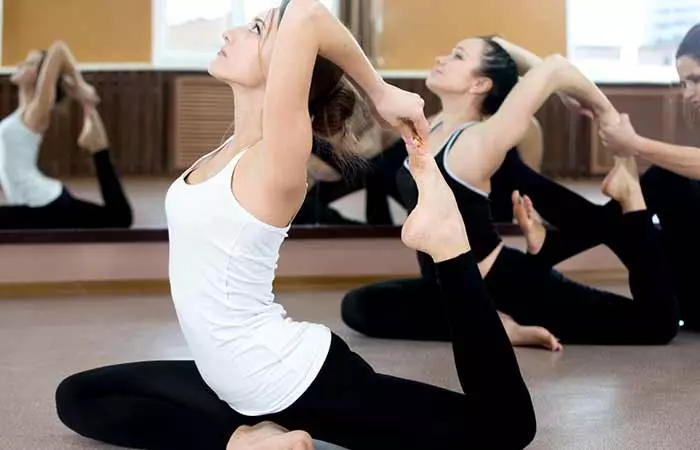
Yoga is practiced with bare feet. It’s all about grounding and connecting your body, therefore, shoes are not required. Leave them on the rack outside of the yoga space.
Additionally, finding a quiet space is the key to a mindful session. Yoga requires staying present in the moment and being fully aware of each and every sensation you experience. A ringing phone will not only distract you but will also disturb those around you. Turn the phone on silent before you enter your yoga class.
4. Do Not Quit Impulsively
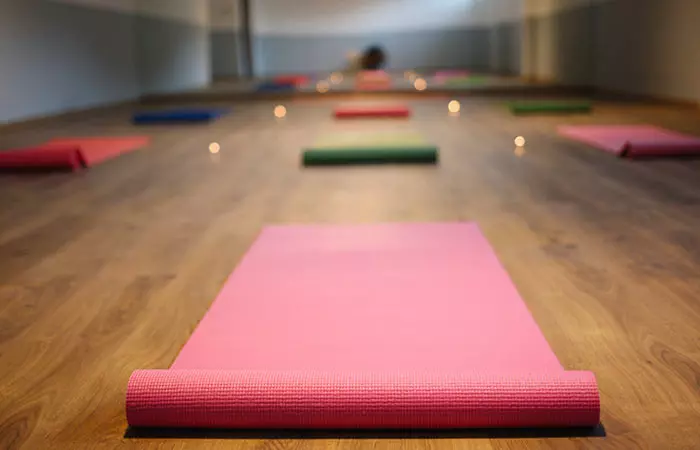
You might love the idea of yoga, but might be disappointed after you join a class. Well, do not lose hope just yet. Try at least three different studios and styles of yoga before you decide that yoga is not for you.
A large bit of the practice also depends on the teacher you chose to guide you through your yoga journey. In fact, it is a must to practice yoga under an experienced trainer. It is alright if you like one teacher more than the other. It is important to connect with and understand your instructor.
Never hesitate to ask your teacher or yoga studio if you need clarification about something. Let them know what you hope to achieve and they will help you in setting intentions that are suitable to your needs. If you do not like one yoga form, try experimenting with other styles, such as Hatha, Vinyasa, and Kundalini yoga. This will help you discover which practice resonates with you the most.
A good Yoga class will also help you in finding a supportive community that will make your daily practice enjoyable. Seek and you shall find!
B. All About The Practice
Now that you’ve had a glimpse of the essentials, it might be a good idea to know what to expect from a class, and what your approach to yoga should be.
5. Do It For Yourself
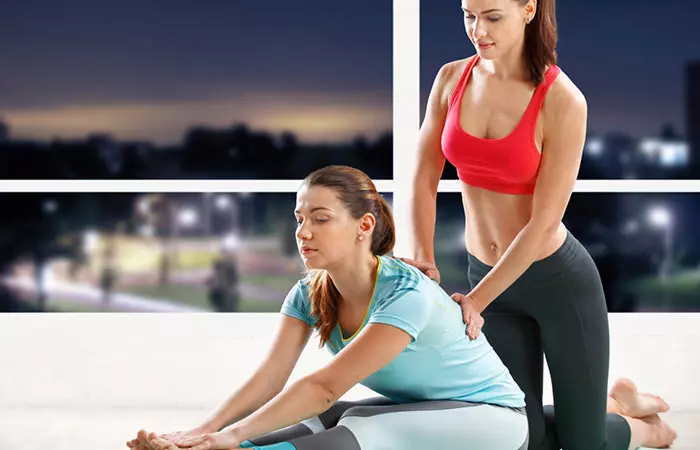
Yoga gives you the much-required break. It is time for yourself. You may find yourself being introspective and focused on you as a being. You may notice this more and more as you continue the yoga practice. Indulge in what feels good, and experiment so that you can discover something new about yourself every time you get on the mat. Everyone’s body is different, so do what feels best for you.
6. Allow Yourself To Relax

It is sad that in the hustle and bustle of our daily lives, we deem relaxation as a luxury. Resting and relaxing are necessary. Creating that zen or balance in life is essential. Yoga helps release trapped stress and makes you relax.
Internally practicing gratitude towards the people around you and also towards yourself can help immensely in emotional releases that can help let go of years of pent-up stress.
Also, take time to rest in between postures if you feel the need. If you feel a posture getting too intense, and your body craves a break, assume Balasana or Child’s Pose. Listen to your body.
7. Pay Attention To Your Breath

The postures and breathing exercises go hand in hand. Focusing on breaths and coordinating the movements every time you inhale and exhale is imperative. Breathing helps you in clearing the mind and relaxing the body. Remember, you will be able to progress better when you are aware of your breathing.
8. Push Yourself, But Do Not Force A Pose
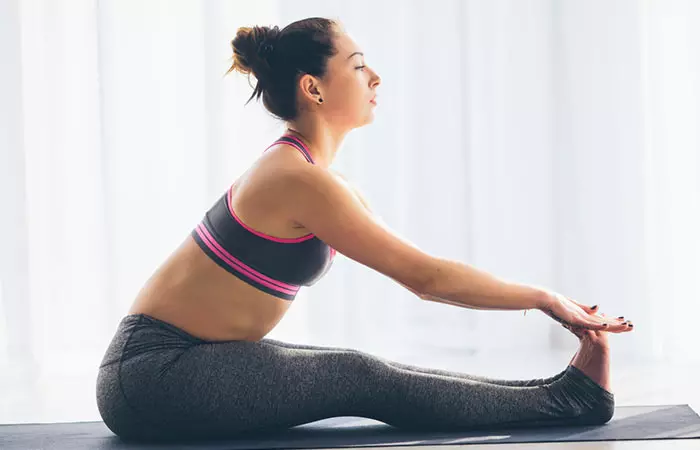
You have to listen to your body. While it is important to push yourself to progress, if your body says no, listen to it and stop immediately. Yoga is about breaking free of inhibitions, and not going through pain. Also, you must gradually progress. You may not achieve a pose completely, but you can work in that direction. It is important to do each pose with integrity and intention, which builds character off the mat and in daily life.
Every pose has a modification and advancement. If you do not get the current posture right, you do not have to progress to the next step.
Also, remember that injury is a reality, and it does happen in yoga. Follow the teacher’s guidance, listen to your body and minimize any risks.
9. Do Not Compare
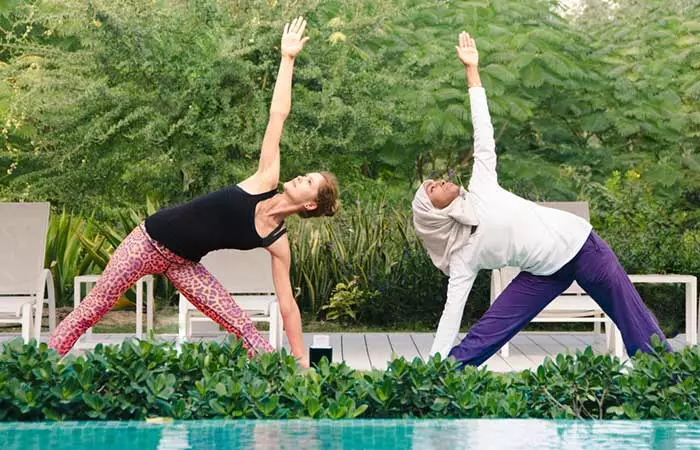
Never compare yourself with your fellow practitioners. Yoga is a non-competitive practice. Just be aware of your own abilities.
Yoga can be done by just about anyone irrespective of age, fitness levels, health, etc. It is important to understand that yoga is a journey and not a destination. It is all about the union of the mind, body, and spirit. Concentrate on that, and not on what or how the person next to you performs.
10. Yoga Can Be Intense – But It Doesn’t Have To Be
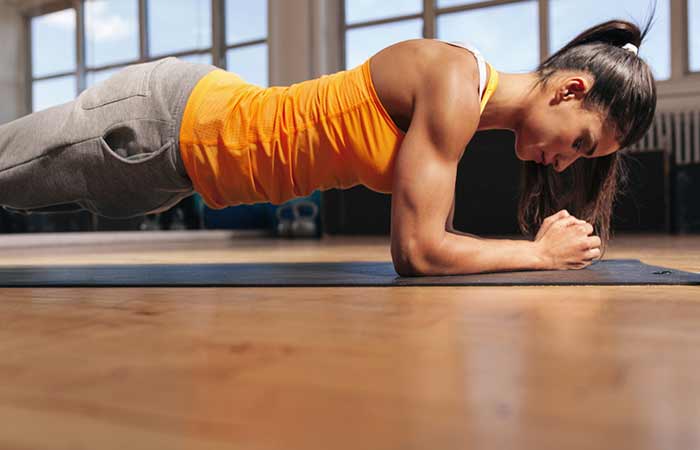
There are different kinds of people all around, and while some like their workout to be fast-paced and intense, others like a smooth, slow-sailing form of exercise. Yoga is a set of stretches, and depending on what you want, you could pick the faster-paced Bikram Yoga, Hot Yoga, Vinyasa or Ashtanga Yoga, or the slower-paced Yin Yoga, Iyengar Yoga or Kundalini Yoga forms.
Or sometimes, simple things like adjusting lighting and having a carefully curated music selection playing in the background can add to the experience. Whatever you choose, the benefits of yoga will remain the same. Yoga has something for everyone! A little bit of research and you will find your calling.
 Quick Tip
Quick Tip11. You Do Not Have To Be Ultra Flexible
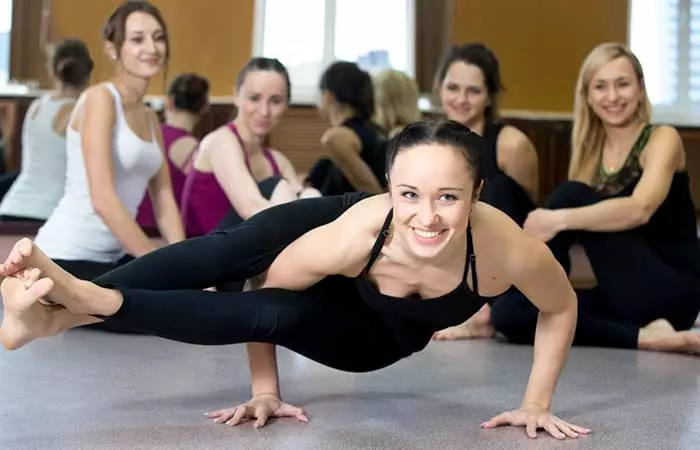
You might shun the idea of yoga, simply because you are not strong or flexible, and cannot even imagine doing the Ashtavakrasana, or whatever it is that your neighbor can.
While you are joining a yoga class to become strong and flexible, it is not a prerequisite. Nobody is watching you!
You must also remember that yoga is not about visual appearances. A typical yoga studio may not have mirrors. This is because the focus should be on your stretch and how you feel, and not on how you look.
C. Beware And Be Aware
These are a few points of caution. Be clear and transparent about any issues at the outset. Only if your instructor knows your issues ahead of time, they will be able to help and guide you.
12. Let Your Teacher Know
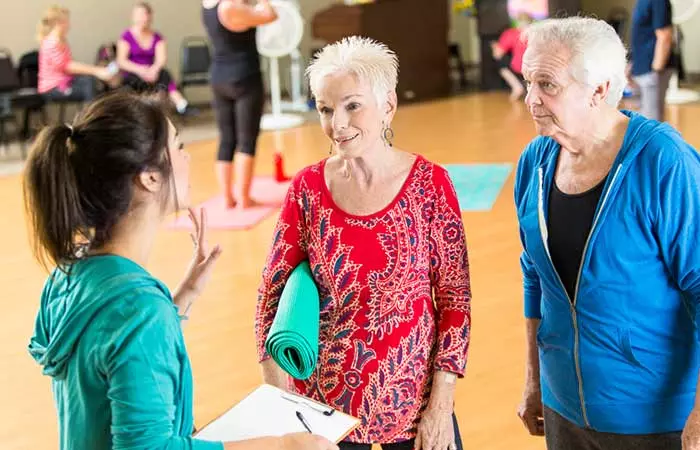
Inform your instructor of your injuries and ailments to make sure you have a safe practice. If you have high blood pressure, heart conditions, or dizziness, your teacher must know. These ailments may be contraindicated, and your guide might modify a certain asana if it is not meant for you.
Also, as you are new to the practice, the stretching might cause your body to react in certain ways. Notice how your body feels. If anything feels very off to you, let your instructor know. Otherwise, you may gently notice your body opening in areas that haven’t been open before! If your instructor is aware of your physical and mental condition, they can help you in reviewing poses and preparing props for sessions customized to your needs. Remember, they are the experts, and you need to have transparent communication with them to ensure you have the best experience.
13. Yoga During Menstruation And Pregnancy

During your menstrual cycle, it is recommended to avoid inversions.
Also, if you are pregnant and want to start yoga, consult your doctor first. Consider prenatal classes. If you have been practicing yoga already, let your instructor know once your pregnancy is confirmed. She/he might modify some postures to make your practice comfortable. Meditation and relaxation techniques are highly recommended for the benefit of both mother and child.
A blogger who frequently writes about her daily life experiences recently reflected on her memories of practicing yoga during her pregnancy. She expressed, “Just like I had to draw out the positivity and dependency/support from within all through my pregnancy, yoga made me derive that internal strength and a calm state of mind from within (i).”
D. Yoga Terminology
It is important to know some basic yoga terms that your instructor is likely to use. In all likeliness, you will join a class that has been on for a while, so your teacher might use those terms anyway. If you know them, you won’t be lost.
14. Asana
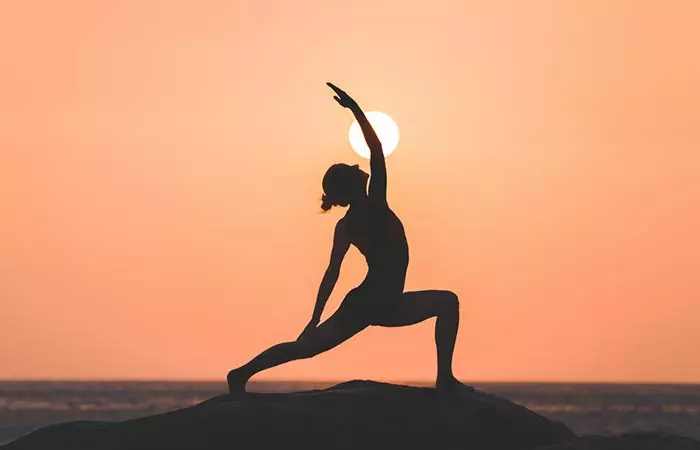
A yoga pose or posture is called an asana. It is a Sanskrit word.
15. A Full Yoga Breath

A typical full yoga breath is when you inhale deeply, but without any force. The breath first goes into the lower lungs, thereby allowing your abdomen to rise visibly. It then fills the mid-portion of the lungs, where you will feel the sides of the ribs expand. You finally take the air to the top of the lungs, thereby feeling your chest rise. Once you have filled your lungs to their full capacity, exhale slowly, and relax.
Taking every breath of our lives like this is essential. Fortunately, yoga gives us a chance to do so.
16. Pranayama
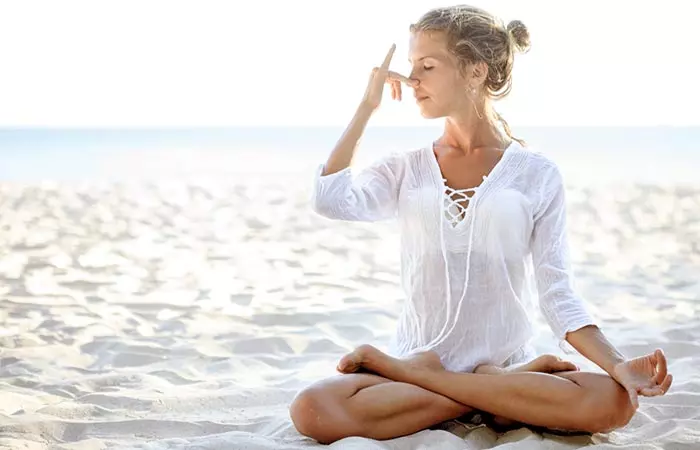
Pranayama or life force comprises of yogic breathing techniques. These are used as effective tools for both stress management and in the preparation of the mind for meditation.
17. Meditation
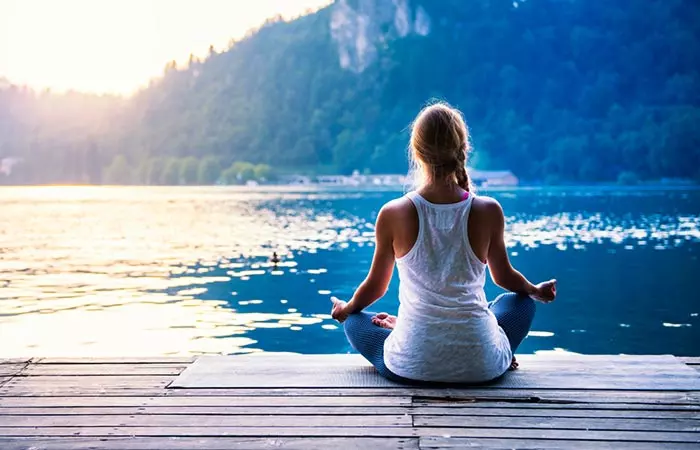
Through meditation, you attain peace of mind. The techniques in this practice can be used to develop concentration, increase your focus and attention span, and relax completely. With meditation, you can overcome a restless mind with ease.
18. Yoga Nidra
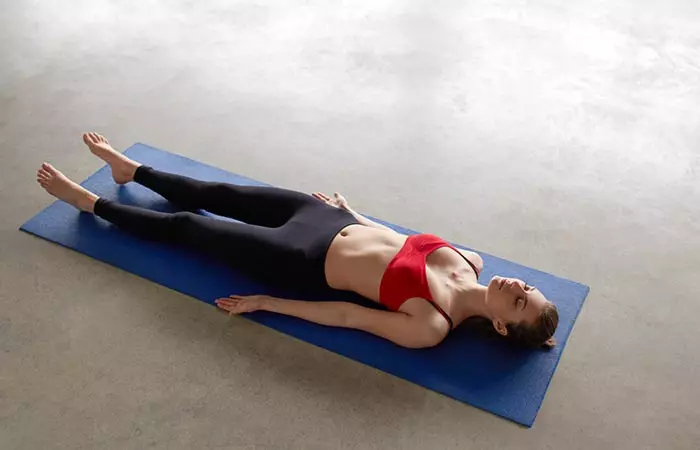
Yoga Nidra is another technique that allows deep relaxation. It works on the physical, mental, and spiritual levels, and allows you to expand and deepen your inner peace. It is a technique we could all use to instill tranquility in our stressful lives.
E. The Fruits Of Yoga
All right! We’ve covered everything from what you need for a class to the practice itself, and some basic terms. But what will yoga do? Well, in this segment, we will talk about the benefits of this fantastic practice that some call, “an expression of life.”
19. Yoga Will Improve Not Only Your Health, But Also The Quality Of Life
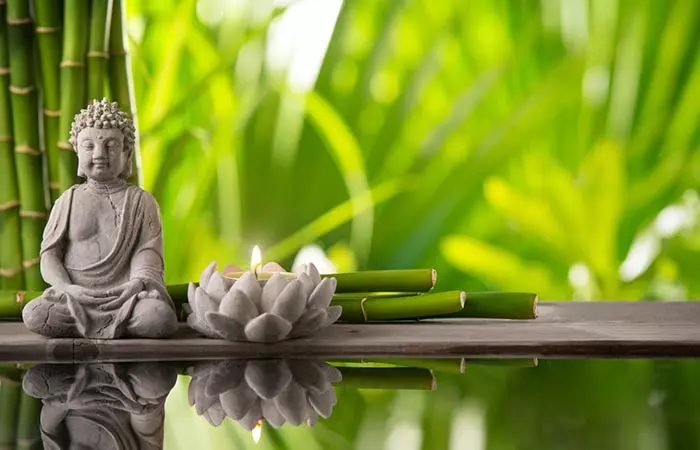
First and foremost, you must have patience when you practice yoga. Yoga does not yield results in a day, and it is only about a month after you begin practicing that you will see noticeable results. But you will see results for sure, and these are a few to name.
1. Reduced stress
2. Improved, enhanced posture
3. Enhanced flexibility and strength
4. Relaxed breathing
5. Clarity of thoughts
6. Improved self-esteem
7. Ideal weight
8. A boost of energy
9. Inner peace and happiness
20. Never Take Your Practice Too Seriously
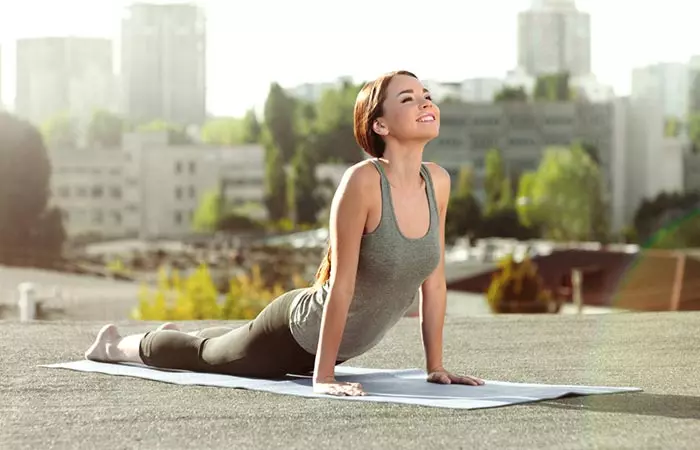
When I make a statement like this, it doesn’t mean you don’t practice with commitment; it just means that you must have fun as you practice. Enjoy this long and never-ending journey of improving your flexibility and activating your muscles. Yoga is not a passive practice – indulge in it, and take an interest in every move you make. Learn and improve as you go on, but most importantly, smile through your daily practice.
If you are practicing yoga at home, setting up a functional space can significantly enhance your practice. Scroll down to learn how you can create your own yoga space.
Creating A Personal Yoga Space
Here are some tips you can follow to create your personal yoga space:
- Select a quiet corner in your home with natural light and good ventilation.
- Keep the area clean to maintain focus and a peaceful ambiance.
- Add calming elements like plants and essential oil diffusers to the area.
- Invest in a high-quality yoga mat with adequate cushioning to support your practice.
- Depending on the type of yoga you perform, you can also play some soft music to add to the ambiance.
- Ensure there are no distractions, like a mobile phone, other electronic devices, newspapers, etc.
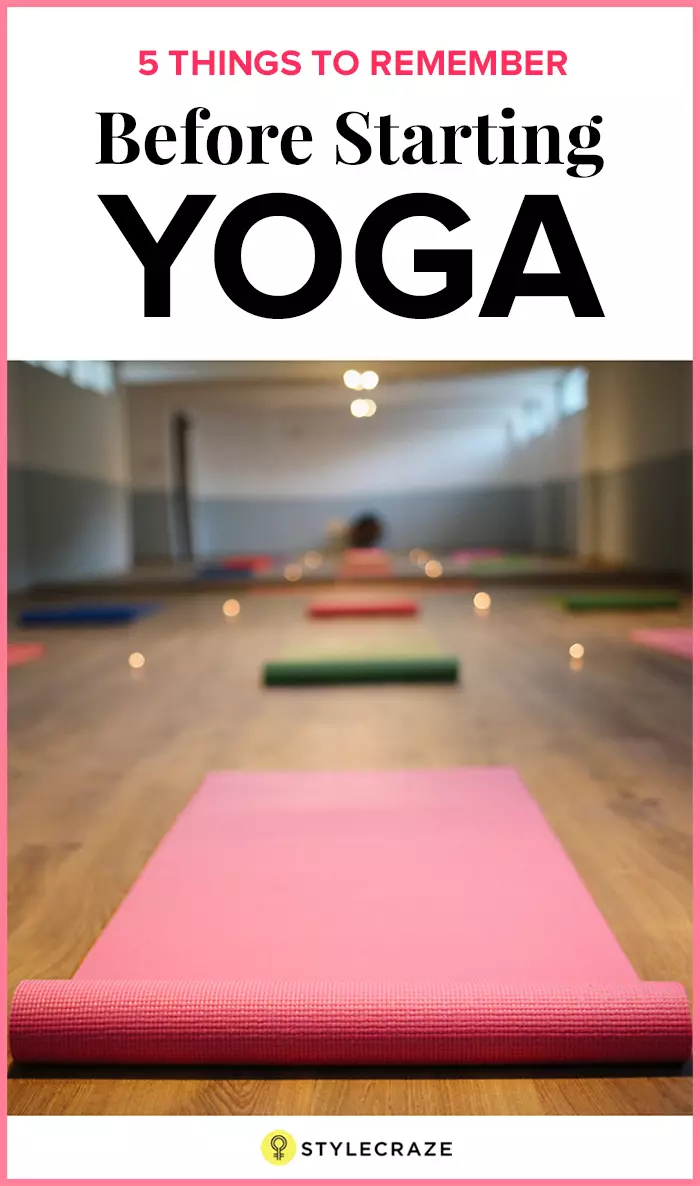
Wondering what to eat before and after a yoga session? Get all the nutritional advice you need in this video guide. Discover the best foods to fuel your practice and aid recovery. Click now to watch and optimize your yoga routine!
Key Takeaways
- A basic prerequisite of doing yoga is comfortable clothing, as you need to move and stretch a lot.
- Yoga is about practice and getting better with time so give yourself time before you decide it’s not for you.
- Let your instructor know about any medical conditions or body related issues before you start the classes.
- Keep all possible kinds of distractions away while practicing yoga.
Infographic: Things To Know Before Trying Yoga
Yoga is a beneficial activity for your body as well as your mind. However, there are certain things you should know before you start practicing it to help you do it even more effectively and efficiently. Check out the infographic below for pointers you should keep in mind before trying yoga.

Illustration: StyleCraze Design Team
Yoga is an incredible activity to improve your flexibility and body strength. Everyone appears to be eager to discover how a stretching exercise might help with various health issues. But, to do it the right way, one has to know the things to do before yoga. So, follow the steps outlined above to prepare for yoga and reap its great benefits. This article covers the fundamentals of yoga for beginners. The long stretches and deep breaths are sure to help you deal with stress, anxiety, and restlessness.
Frequently Asked Questions
Can I drink water before yoga?
Yes. Drink a glass of water about half an hour before yoga to maintain your body’s hydration levels.
Should you warm up before yoga?
Yes. For the warm-up, stretch your muscles gently to loosen them up so that they are ready for yoga.
Can you do yoga while on periods?
Yes. Yoga may help alleviate some of the pain and discomfort as you center your mind, stretch your muscles, and attain calmness. However, consult your instructor and alter some of the poses if you’re in extreme pain.
Can we bathe after yoga?
Yes. It is recommended to let your body cool down for about an hour before taking a bath. An invigorating shower or bath might help in the process of detoxification.
Can I eat immediately after yoga?
No. It is recommended to wait about an hour before consuming something. Consider having a light, healthy snack.
Can I sleep after yoga?
Yes. After a yoga session, you can take a short nap to relax and reduce fatigue.
Illustration: Things You Must Know Before You Start Practicing Yoga
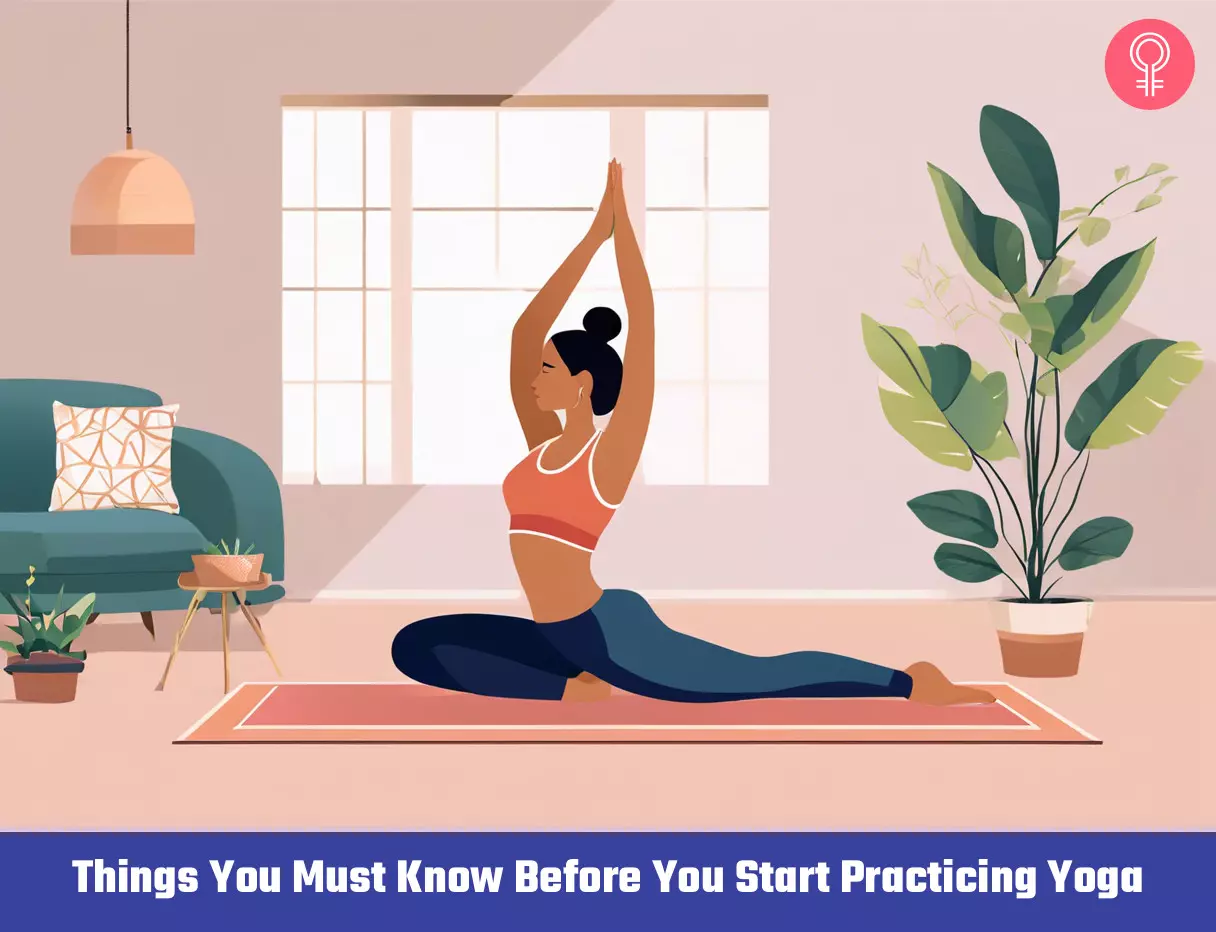
Image: Stable Diffusion/StyleCraze Design Team
Personal Experience: Source
StyleCraze's articles are interwoven with authentic personal narratives that provide depth and resonance to our content. Below are the sources of the personal accounts referenced in this article.
i. Yoga Gifted Me a Happy Baby – Prenatal Yogahttps://yogabout.wordpress.com/2015/07/27/yoga-gifted-me-a-happy-baby-prenatal-yoga/
Read full bio of Nichole Dandrea-Russert
Read full bio of Shirin Mehdi
Read full bio of Ravi Teja Tadimalla
Read full bio of Himanshi Mahajan







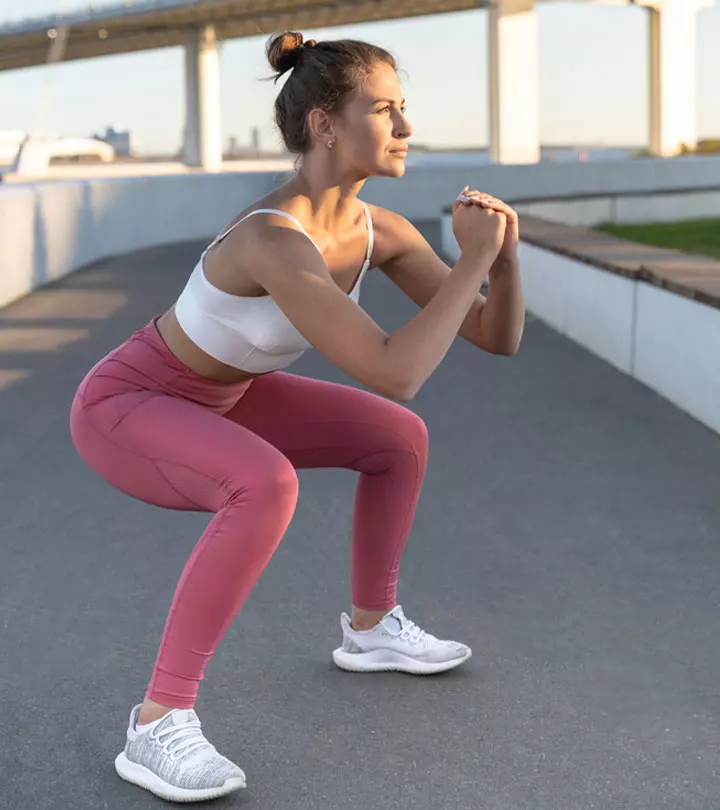
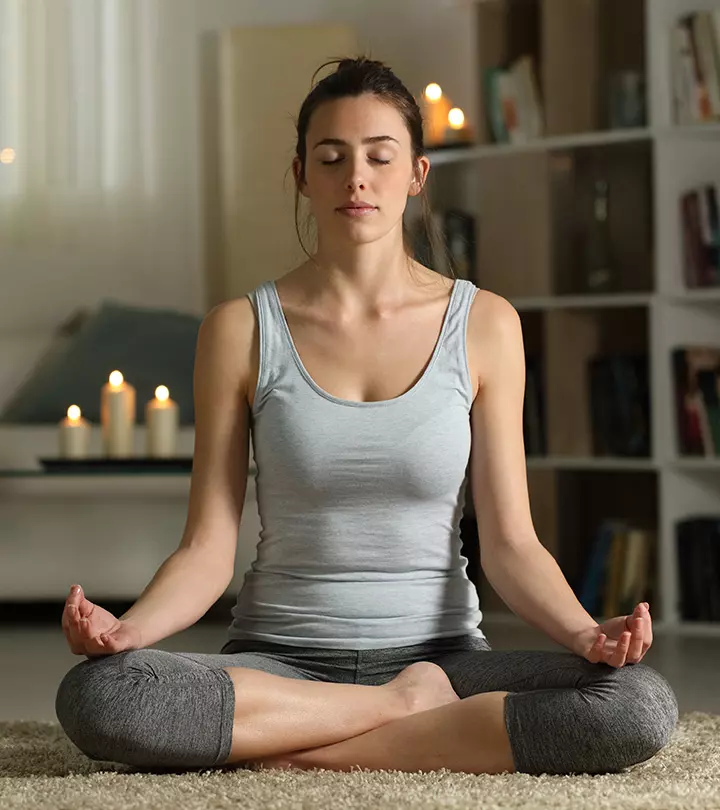

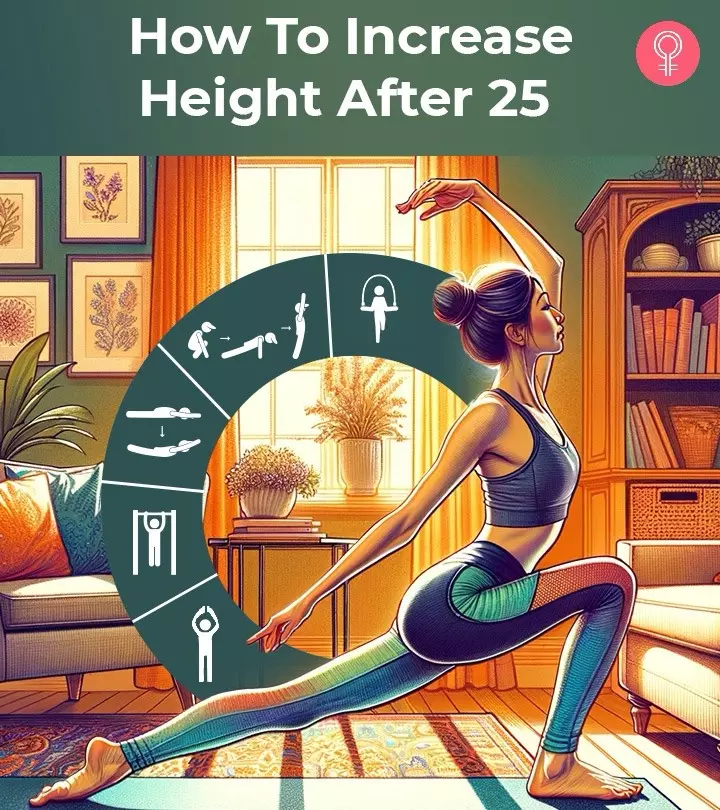
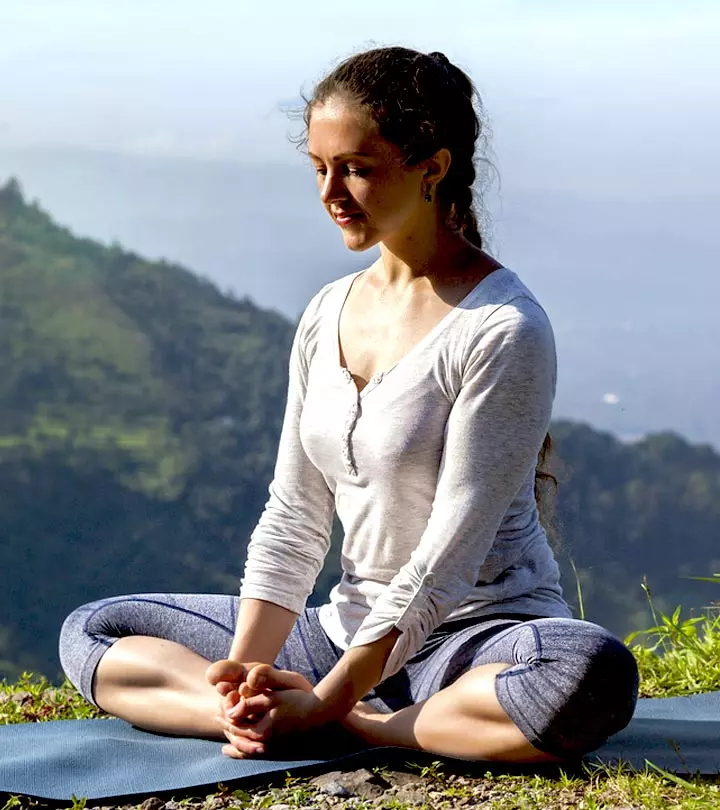




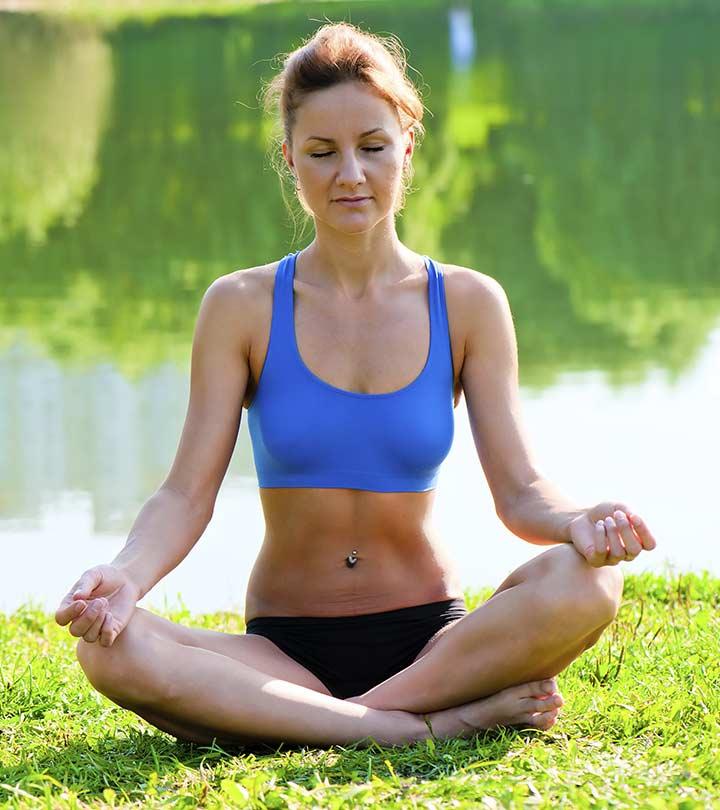
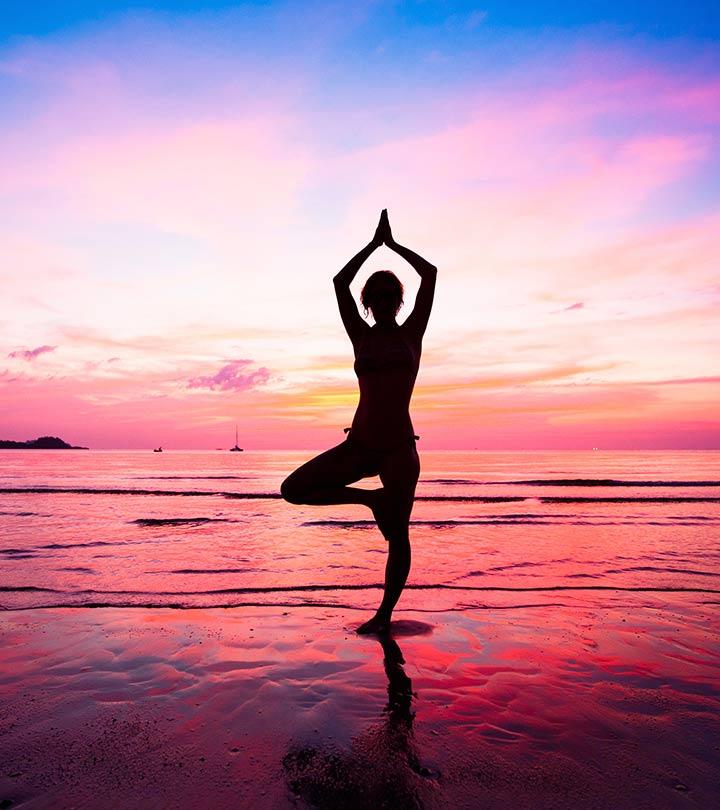
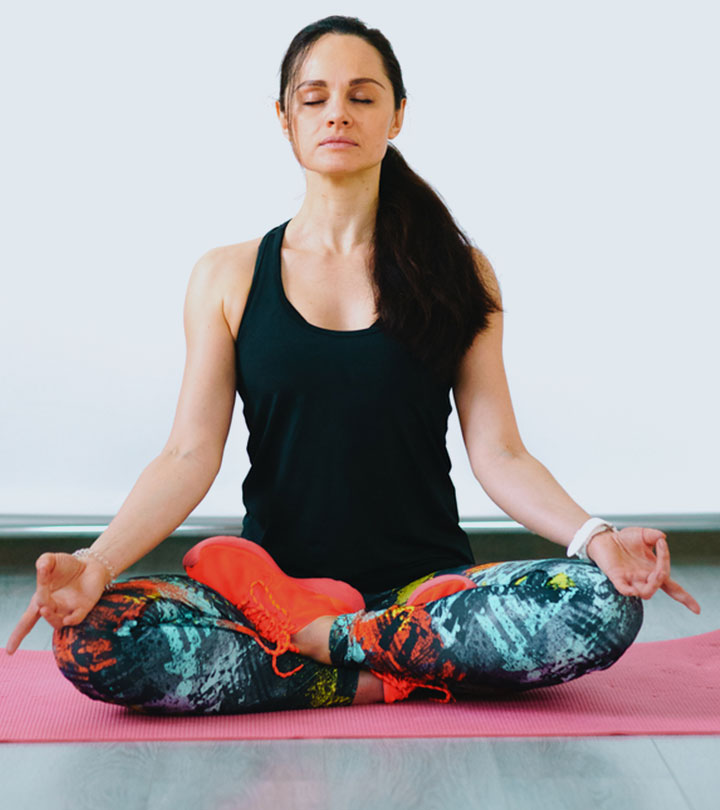
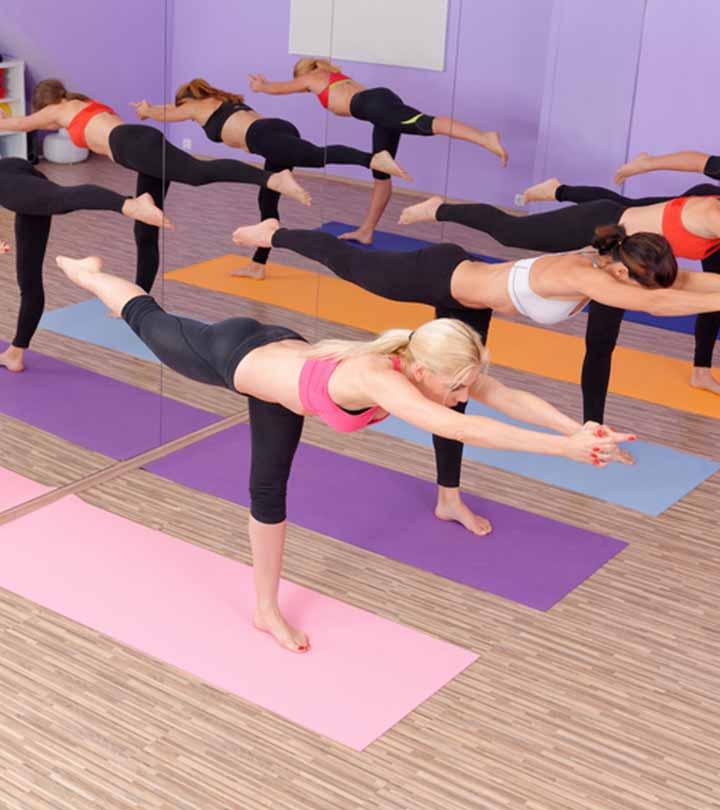
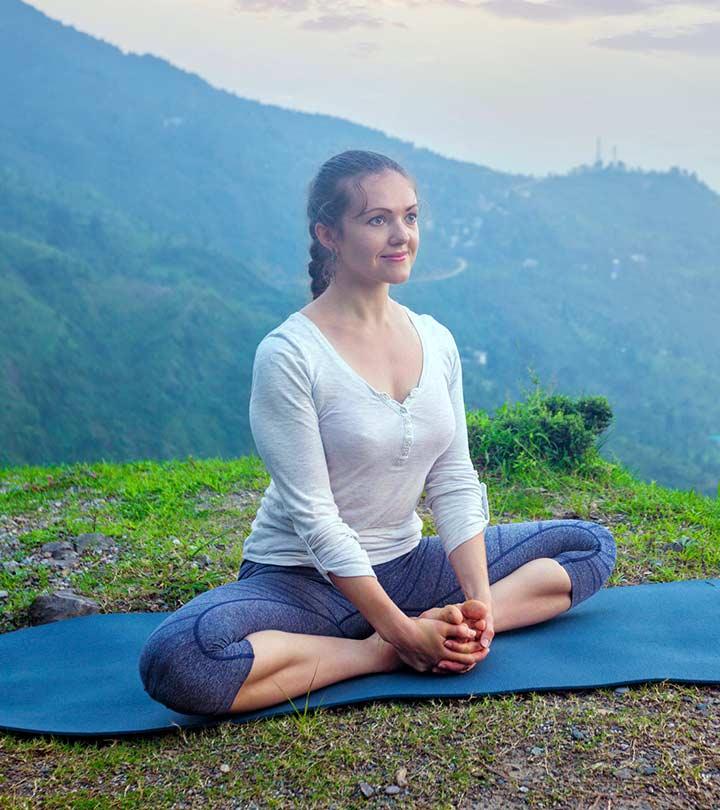
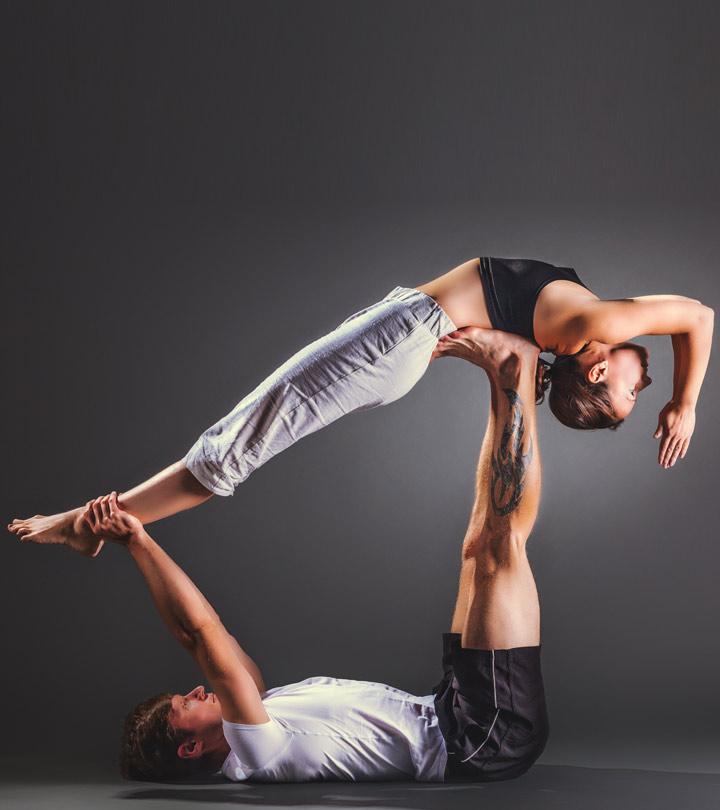
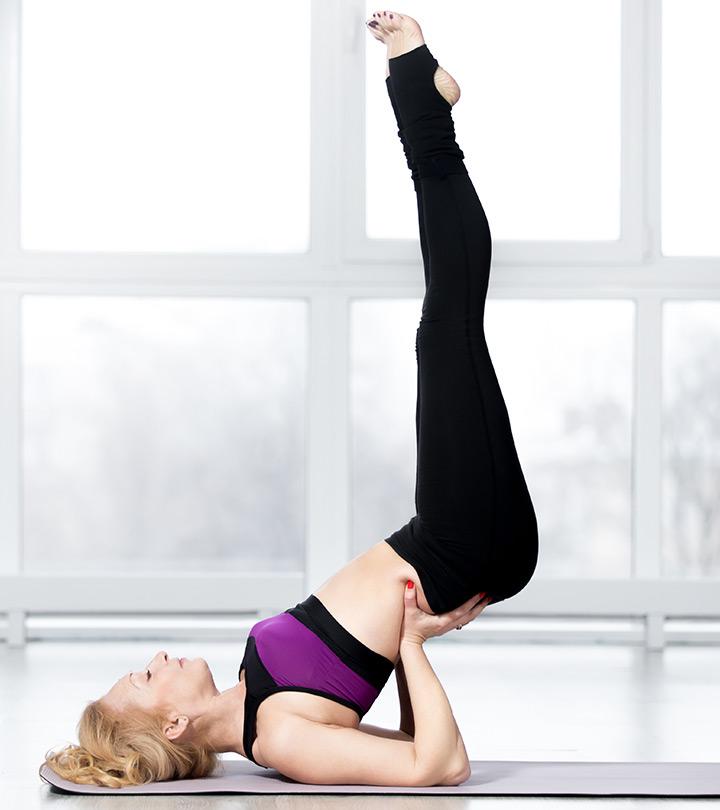

Community Experiences
Join the conversation and become a part of our empowering community! Share your stories, experiences, and insights to connect with other beauty, lifestyle, and health enthusiasts.